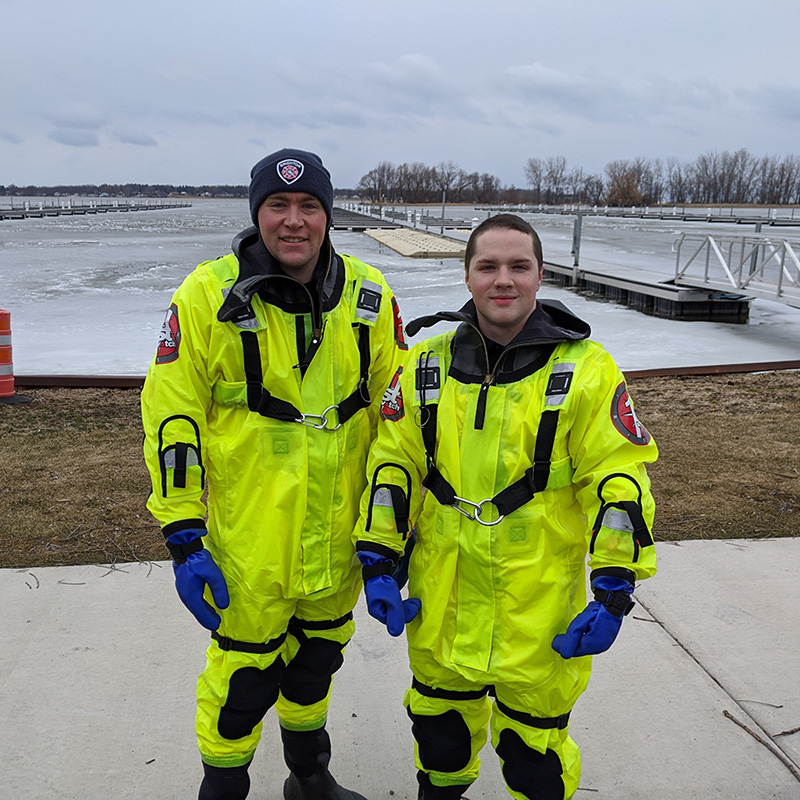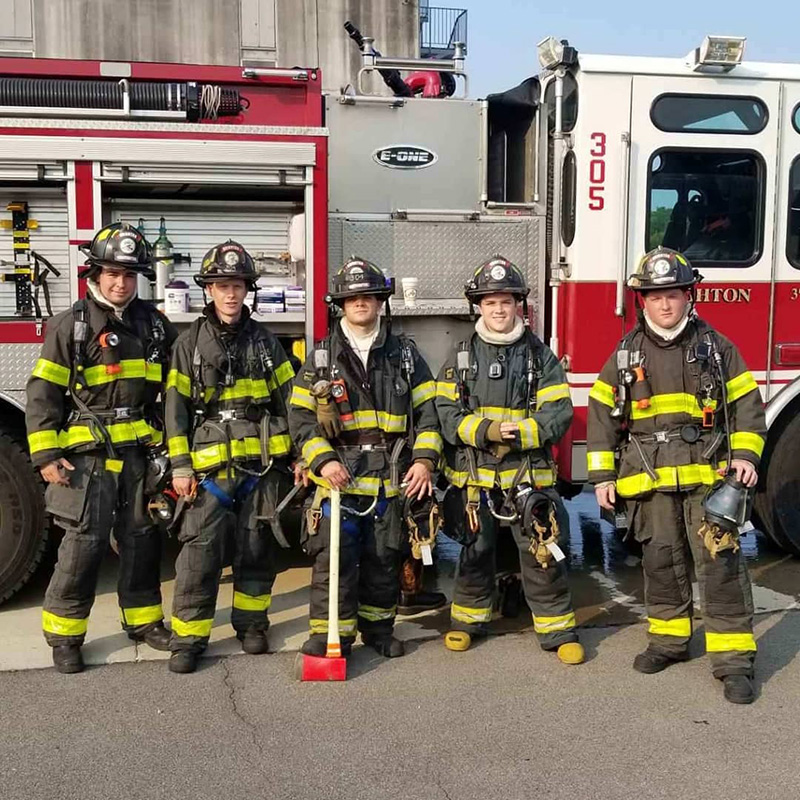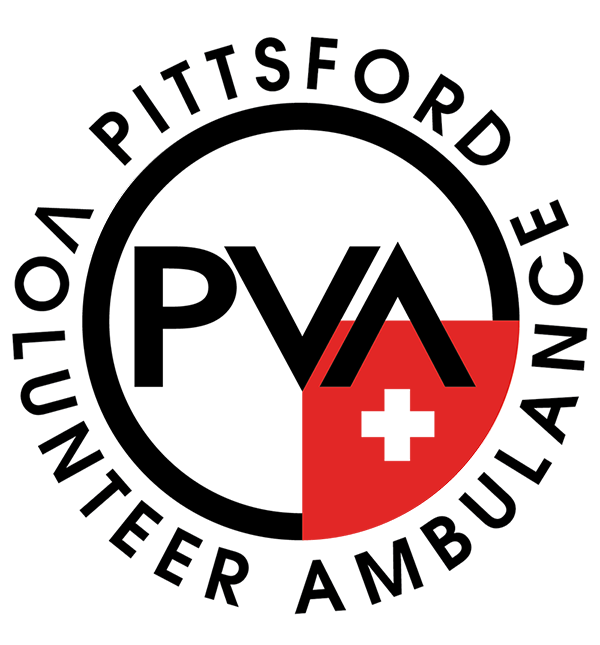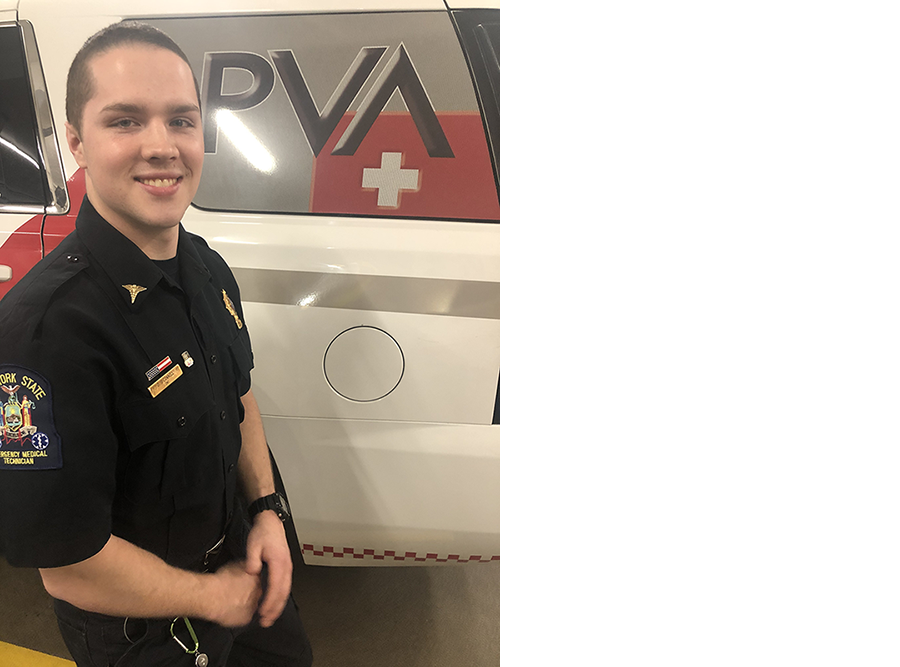“I got involved in EMS accidentally.” He says, “I was involved in a high school program that immersed kids in various healthcare professions during my senior year. I did a rotation with TLC ambulance in the city of Auburn, NY and found that EMS was an unexpected passion of mine.”
Dan continued to pursue his passion in first response by joining the “Bunker Program” at Brighton Fire Department in 2017, just up the street from Pittsford.
“The program allowed me to live right down the street from campus essentially for free, in exchange for 24 hours a week working alongside the career firefighter staff at Station #1.” He told us, “I was hired by the district in 2018 and made an easy transition from bunker to career firefighter”.
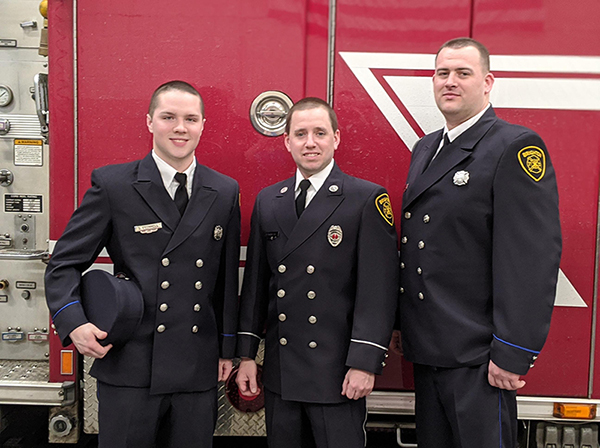
“Because of our staffing model, we are typically making first contact with the patient and gathering valuable information that needs to be passed on to the transport unit and beyond to the hospital” Dan says. In our region, most companies have multiple stations throughout the community where as at Pittsford Ambulance, we are responding out of one base. Many times, our fire fighters are the first people on scene of an emergency, providing medical care.
“We are typically with the patient for less time, although we may perform a greater number of interventions within that timeframe than the transport unit may during the entire transport time. We are also a resource for the transport unit, delivering manpower for tasks such as lifting or moving patients and equipment, CPR, and other tasks delegated to us.” This transition from physically “fighting fires”, as their title suggests, to providing medical support is a newer one. With the progression of better fire prevention and alert systems, they’ve had an increasing availability to provide service on other emergencies. This has created an opportunity for crossover into the medical world.
“It’s hard to say if there would be benefits, although you can look at other departments across the country who are already merged and operating normally. I don’t see it happening here in the near future, but who knows.” Dan told us. Maybe someday in our region, we will all be under one department providing both Fire and EMS services. For now, we hope to foster a culture of cooperation.
“Joint training is a valuable tool because it allows both sides to understand the goals and objectives of the other. We don’t do enough of this, and it is mostly because of different schedules and timing constraints on both sides.”
“We are both guilty of role ambiguity on scene and when planning and training for situations but we are on the same team, and we need to train together to streamline patient care and improve patient outcomes.” Firefighters like Dan help bridge the gap between two very different – yet converging – perspectives in emergency response.
“I hope to continue learning and leading others in Nursing, Fire, and EMS.”
